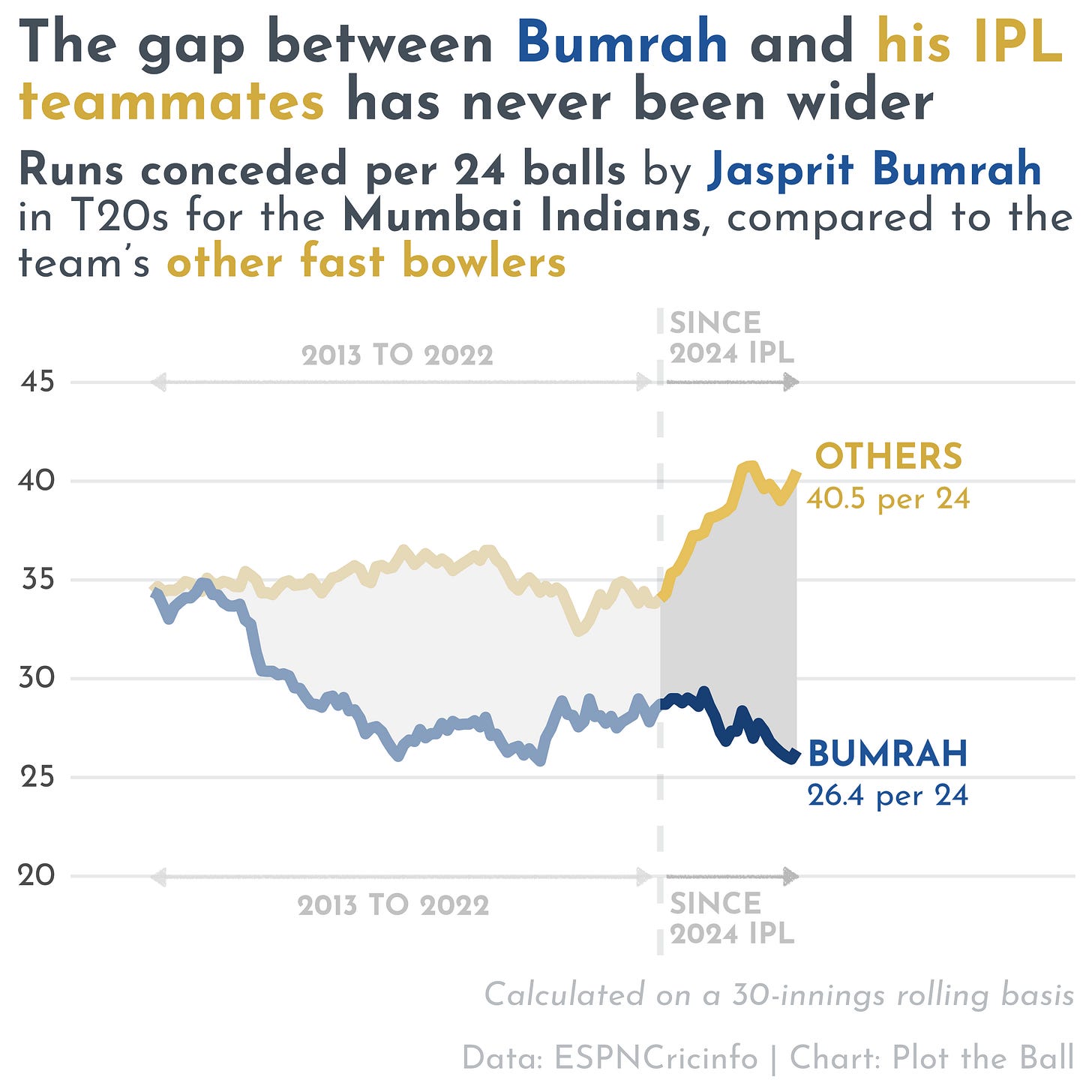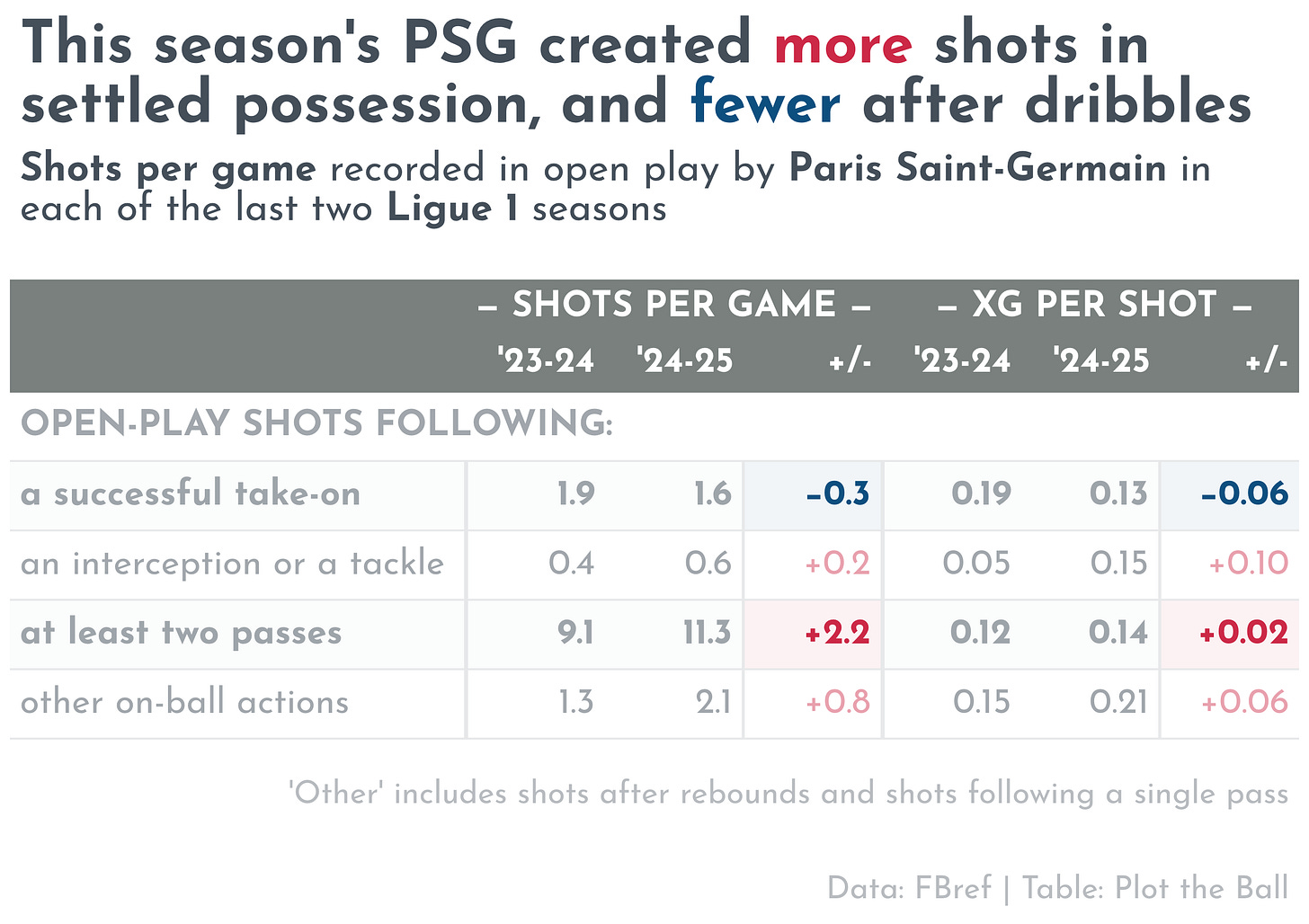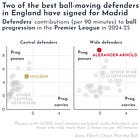🏏 The IPL has become more difficult for bowlers — but Jasprit Bumrah is immune
My Week in Sport(s) 🏏 ⚽️ 🏀 ⛳️ 🏒
Welcome to My Week in Sport(s) — a regular newsletter from Plot the Ball.
Covered in this edition: 🏏 Jasprit Bumrah, ⚽️ Paris Saint-Germain, 🏀 Dominique Malonga, ⛳️ Nelly Korda and 🏒 the Edmonton Oilers.
🏏 The IPL has become more difficult for bowlers — but Jasprit Bumrah is immune
It’s interesting to think about the different ways in which pitchers in baseball and bowlers in white-ball cricket have constraints placed on their usage. Pitching is so physically demanding that teams tend to use starters only once every five days or so.
Meanwhile, the best bowlers play every day — but the rules of T20 cricket only allow them to contribute a fifth of their team’s deliveries in each game. The accelerating pace of run-scoring in the men’s game has been a frequent topic of this newsletter recently. The role that those constraints play in this trend is interesting to think about, too. Would T20 cricket be a more competitive sport if they were loosened so that the best bowlers could bowl more balls? Overall, I’m not sure it would be a net positive.
What I do know is that I’d tune in every fifth day without fail to watch Jasprit Bumrah bowl 10 overs of an IPL innings. Bumrah has always been a great contributor for the Mumbai Indians. Since his return from injury at the start of the 2024 IPL, however, his performance has gone to another level. As the rate of runs conceded by Mumbai’s other pace bowlers has shot up, Bumrah’s economy rate has actually improved. Over his last 30 innings in the IPL, Bumrah has conceded just over 26 runs per 24-ball spell.
During the same period, MI’s other quicks have conceded over 40 runs per 24. This is mostly to do with Bumrah’s ability to consistently bowl the ball in less valuable parts of the pitch for the batting side: in a recent piece for ESPNCricinfo, Sidharth Monga showed that he attempts yorkers twice as frequently as other bowlers — and leaves the ball in ‘the slot’ about half as often. But some analysis by Divyansh Peswani has made me wonder if it’s also due to the intent of the batters he faces, too.
Peswani showed that Bumrah is more expensive at the end of run-chases than he is in the same period of the first innings. In the second half of a game, batters have no option but to score at the required rate; in the first, they can pretend that the cost of scoring slower is trivial because of how much time remains. It’s impossible to know for certain without shot-type data to properly verify their intent — but Bumrah’s overs look like one corner of the T20 world where batters are still constraining themselves.
⚽️ This year’s retooled PSG overwhelmed teams with volume — and quality — in possession
If Kevin De Bruyne and Aitana Bonmatí have to take turns in the right half-space when I close my eyes and imagine a football match, superstar French forward Kylian Mbappé currently has the other side of the penalty area all to himself.
A typical Mbappé goal is easy to picture: dribbling past a defender as he moves in from the left, cutting onto his right foot and powering the ball past the goalkeeper. It’s no surprise, really, that Paris Saint-Germain have created their scoring chances in a rather different way without him this season. Fewer of their shots than last year were directly preceded by a take-on — and more were taken in fairly settled possession. Without their former figurehead, PSG excelled as a dynamic, coherent passing unit.
In Ligue 1, they took 2.2 more shots per game in sequences ending with two passes than they did in 2023-24. (In xG-per-shot terms, they increased the quality of those chances by about 10%, too.) It wasn’t just in France that PSG found success with this approach, either. I don’t feel good about the Qatar-backed club finally getting the Champions League trophy that their owner had long coveted — but Achraf Hakimi’s opening goal in the final followed a string of passes that belonged in my dreams.
What else I learned last week
🏀 Dominique Malonga is starting slow — but time is on the rookie’s side
She might have made headlines for dunking in training camp, but there haven’t been too many Dominique Malonga highlights so far this WNBA season. There’s a simple reason why: she just hasn’t played that many minutes. (Nine per game, on average.)
But there’s no need to panic: her lack of playing time isn’t completely unusual for someone selected so high in the draft. Since 2016, 29 players have been picked in the top three and immediately begun their WNBA career. Three of them averaged fewer minutes over their first eight career games than Malonga has. Age is also on her side. The average top pick over this period has been older than 22 at the beginning of their rookie season; still just 19, Malonga is comfortably the youngest of this cohort.
⛳️ Nelly Korda’s putting stroke deserted her at the US Women’s Open
After featuring here a few editions ago, Nelly Korda came close to winning the US Open last Sunday. She ultimately finished second, as Maja Stark claimed a two-shot victory — and a sixth straight major for players from outside the United States.
When she struggled in 2024, it was Korda’s approach play that let her down. Last weekend, though, it wasn’t an issue. (In fact, she was the best player in the field from tee to green — recording almost four strokes gained per round.) While her putting has always been solid — she’s gained strokes with the club in each LPGA season since 2021 — she got on a cold streak at the wrong time in Wisconsin. Korda was the only player in the top 12 of this year’s tournament to lose strokes to the field on the greens.
🏒 The Oilers’ run to the Stanley Cup Final looks pretty similar to last year
Dallas Stars head coach Pete DeBoer was pretty certain after the Edmonton Oilers knocked his team out of the NHL playoffs again. “That Edmonton team is better than the team we played last year — deeper, defend harder, harder to play against,” he said.
Their win in game one of the Stanley Cup Final — over the team who beat them at the same stage last year — puts the Oilers in a strong position to go a step further than they did in June 2024. Per HockeyViz, however, their underlying level of play during their 2025 Final run has been remarkably similar to last year’s. The Oilers recorded 52% of the expected goals — and scored 56% of the goals — in their games during the first three rounds of the 2024 playoffs. Those figures this year? 52% and 57%.
The next edition of My Week in Sport(s) will be published on Friday June 13th.






Love this!